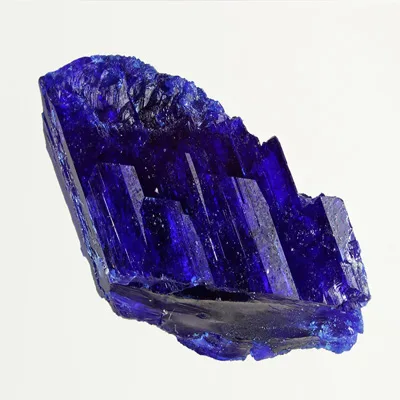
Appearance
The deep blue to azure hue of linarite, which can range from sky blue to navy blue, is well known. It frequently has a deep, vibrant color. The mineral usually has a glassy or slightly waxy look due to its vitreous to resinous luster. Crystals of linarite can range in transparency from translucent. They have some degree of light transmission when they are transparent. The monoclinic crystal system is how linarite crystallizes. It can form a wide range of crystal habits, from prismatic to tabular crystals.
Geographical Distribution
Many places throughout the world have been found to contain linarite; significant locales include the Spanish province of Linares, where it was initially reported, as well as the United States, Australia, Mexico, and a number of European and African countries.
History
For the type locality, Linares, Linares-La Carolina District, Jaén, Andalusia, Spain, Ernst Friedrich Glocker gave it its name in 1839. Typically observed as tiny to microscopic tabular or elongated azure blue crystals in clusters or crusts.
Chemical Composition
CuPb(SO4)(OH)2 is the chemical formula for linarite. It has ions of hydroxide (OH), sulfate (SO4), lead (Pb), and copper (Cu).

Uses
Because of its stunning blue hue, linarite is mostly valued for its geological, mineralogical, and collector qualities rather than being utilized in practical or industrial settings. Nonetheless, there are several domains in which its utility or application may be limited:
- Mineral Collecting: Linarite’s eye-catching blue hue and eye-catching crystal formations make it a highly sought-after mineral among collectors and aficionados. It can be shown as a specimen and is a prized addition to mineral collections.
- Scientific Research: Like many other minerals, lanthanide is essential to geological, mineralogy, and crystallographic studies. Linarite’s crystal structure, formation mechanisms, and function in the development of ore deposits are all subjects of research.
- Educational Purposes: In order to teach students and geology enthusiasts about mineral identification, crystallography, and the connection between minerals and ore deposits, linarite is frequently utilized in educational settings.
- Gem and Jewelry Industry: Although linarite is not a common gemstone, its lovely blue hue may make it useful as an adornment. However, because of its scarcity and the health risks associated with lead content, it is not widely utilized in the gem and jewelry industry.
- Research in Ore Geology: Linarite might be a sign of the presence of lead and copper mineral resources nearby. In specific geological contexts, linarite can be used as a prospecting marker by geologists and mineral exploration firms.
Table





